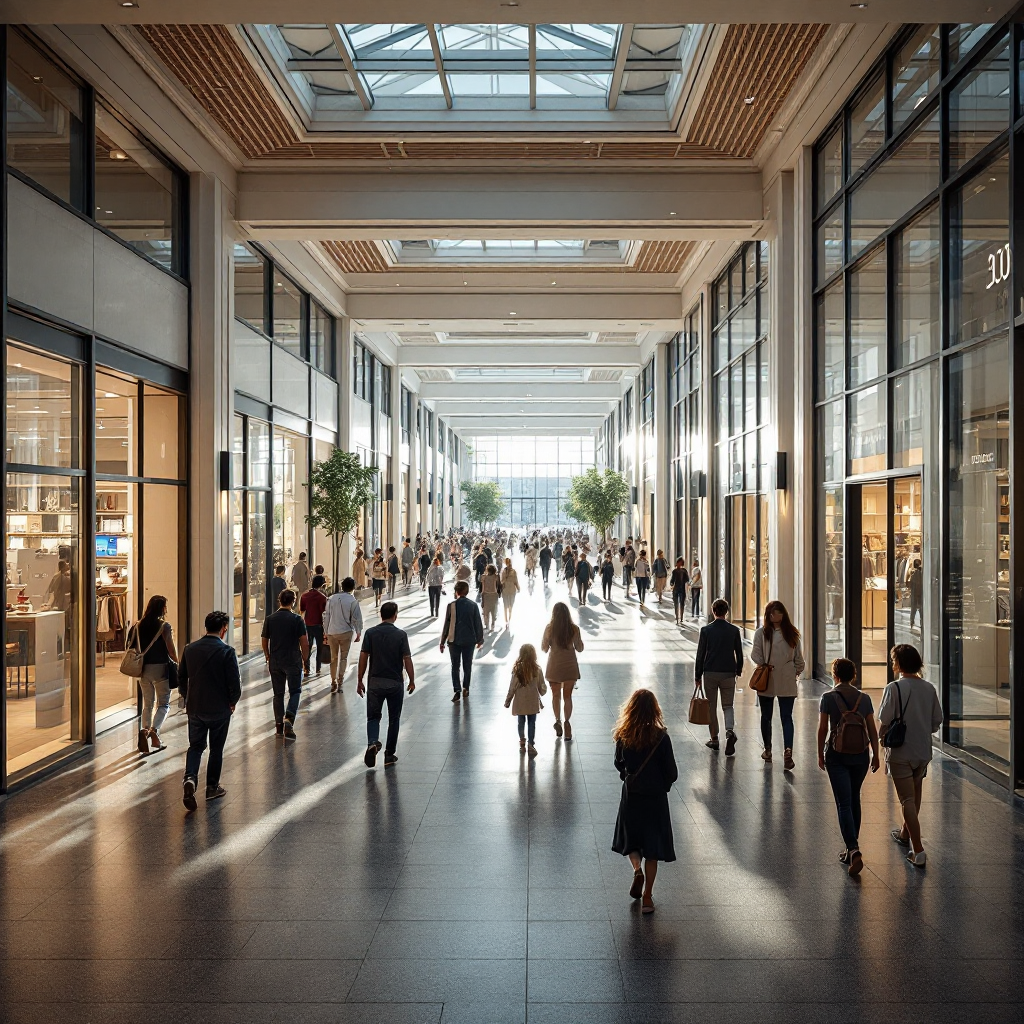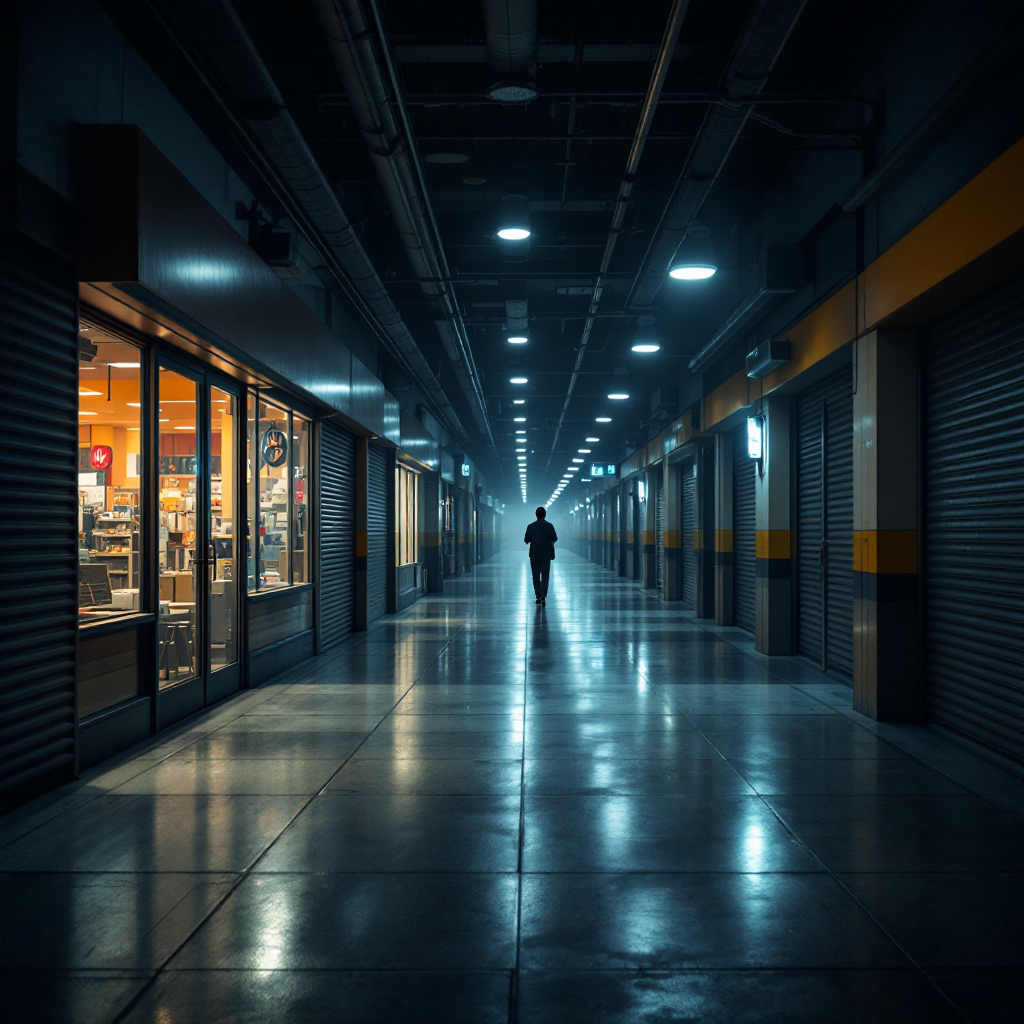AI Surveillance Foundations for Shopping Mall Security
AI surveillance is the backbone of modern shopping mall security. It uses artificial intelligence to turn camera streams into actionable events that security teams can use. For example, Visionplatform.ai turns existing CCTV into an operational sensor network that can detect people, vehicles, ANPR/LPR, PPE and custom objects in real time. This approach helps operators reduce false alarms and keeps sensitive video inside their environment, which helps with GDPR and EU AI Act compliance.
AI models flag unusual behaviours and then raise real-time alerts. First, models analyse patterns. Next, they score behavior against a baseline. Then, if a pattern is outside expected norms, the system will send real-time alerts to security personnel so staff can respond quickly. These real-time alerts to security personnel reduce response times and help prevent escalation. In practice, systems that use AI-powered analytics can improve situational awareness while also reducing the burden of manual monitoring.
With AI you can ensure faster triage, ensure incidents are logged, and ensure data stays auditable. Additionally, AI supports remote monitoring and supports integration with access control and public address systems. As a result, mall operators gain operational efficiency and better protection of shoppers and tenants. For a deeper dive into AI video analytics for retail environments, see our page on AI video analytics for retail.
Research shows that surveillance-based anomaly systems can hit high accuracy figures. For instance, studies report that such systems have demonstrated accuracy rates exceeding 85% in identifying loitering behavior, enabling timely intervention by security personnel [source]. Therefore, combining AI with clear policies and trained staff produces a safer shopping environment and enhances the role of the security team.
Loiter Detection with Video Analytics
Loiter describes lingering in an area without clear purpose. In a busy shopping mall it matters because loitering can signal nuisance, shoplift preparation, or worse. AI-powered loiter detection looks at dwell time, movement vectors, and crowd formations. It flags suspicious behavior like repeated slow circuits near high-value displays or loitering in restricted areas. Then alerts to security teams allow them to assess and escalate if needed.

Video analytics and anomaly detection work together. First, object detection tracks people and carts. Next, the model measures dwell time and changes in gait or posture. Then, it compares those signals to expected patterns for that area and time of day. Systems that use AI can thus detect suspicious activities quickly and with fewer false positives. Importantly, this frees mall security staff from manual monitoring and gives them credible leads to act on.
Loiter detection success depends on good camera placement and baseline data. Some malls see crowding increase by up to 40% during peak seasons, which shifts normal patterns and can trigger extra alerts [source]. Therefore, operators often use adaptive thresholds and retrain models on site-specific video footage. Visionplatform.ai supports on-prem model tuning so operators can improve accuracy without sending data to cloud providers. This setup helps ensure compliance and helps prevent over-alerting. For examples of retail-focused uses, review our solutions for shoplifting detection with video analytics.
AI vision within minutes?
With our no-code platform you can just focus on your data, we’ll do the rest
Camera Integration and Video Surveillance in Malls
Optimal camera placement matters. Place cameras to cover bottleneck points such as areas such as entrances, corridors, and food courts. Add coverage for parking lots and loading docks for full situational context. Good layouts avoid blind spots and enable reliable person trajectories across overlapping fields of view. Camera networks must stream high-quality video feeds to an analytics engine that runs either on edge devices or on a local GPU server.
Traditional CCTV relied on human monitoring and recording. By contrast, advanced video surveillance uses ai video analytics to process streams continuously and generate structured events. That change moves malls from reactive to proactive postures. For example, a monitoring system that streams events via MQTT can power dashboards and operations as well as alarms. Visionplatform.ai supports integration with leading VMS platforms so sites can reuse existing security cameras and video footage rather than rip and replace hardware.
Data flows typically follow a simple path: camera → encoder or edge device → analytics engine → event bus → operator console and security systems. This flow allows mall security teams to receive targeted alerts and to respond quickly. It also allows operators to audit detections and to refine models. Moreover, using on-prem processing avoids the privacy risk of off-site clouds and helps ensure compliance with regional rules.
When camera arrays are well designed, video surveillance can detect suspicious behavior and provide evidence for escalation. For best results, balance resolution, frame rate, and network capacity. Finally, train staff on new workflows so security personnel can embrace automation without losing situational judgement. For guidance on occupancy and footfall analytics in mall contexts, see our mall occupancy and footfall analytics resource.
Proactive Crowd Management and Security Systems
Crowd management prevents density-related risks. In busy shopping centers, unmanaged crowd density creates safety hazards. AI systems can track crowd formations and estimate crowd density in real time. When thresholds are exceeded, the platform can trigger proactive measures. For example, it can send alerts to mall security, adjust signage, or open additional entrances to relieve pressure. This type of real-time crowd management improves flow and reduces panic risk during incidents.
AI-powered analytics can also integrate with access control and public address systems. Then security systems can lock or unlock doors, broadcast voice instructions, or route staff to specific zones. A proactive system can send real-time alerts to security and escalate to senior managers when necessary. In practice, this reduces response times and helps protect thousands of visitors daily. Additionally, cross-system integrations let operators leverage surveillance data for operational tasks beyond safety, such as optimizing staffing during peak hours.
Use cases include directing crowds away from bottlenecks, closing off restricted areas, and coordinating staff movement to prevent stampedes. Systems that support proactive triggers and sending real-time alerts to security minimize confused responses. They also help ensure safety and protect tenants. For retailers and mall operators that wish to expand capabilities, integrating threat detection and ANPR into the same fabric of analytics is feasible. In short, proactive AI helps staff respond quickly and improves safety across the property.
AI vision within minutes?
With our no-code platform you can just focus on your data, we’ll do the rest
Preventing Vandalism in Retail Malls
Vandalism harms revenues and damages the shopping experience. Common scenarios include graffiti, property damage, and forced entry to service areas. Early detection matters because early alerts often keep repair costs down and reduce downtime for tenants. AI can detect anomalous object placement, unusual motion near storefronts after hours, and sudden damage events in real-time video. When the system spots such actions it can alert mall security teams to intervene.

Object detection and behavioural models can spot graffiti activity in progress or identify people loitering near service entrances. As an example, AI-driven systems can detect suspicious tools, forced entry attempts, or repeated impacts on glass. Then alerts to security teams enable rapid intervention and limit loss. In some trials, early intervention cut repair and downtime costs by a measurable margin, and system accuracy supported effective allocation of security staff.
When combined with clear policies on escalation, these systems act as a deterrent and reduce repeat incidents. Also, integrating with public address and lighting systems can deter vandals immediately. For a practical retail example, our work on loss prevention and shoplift detection shows how many uses can be combined within the same analytics platform. By using on-prem models that leverage your VMS, operators ensure that sensitive video footage does not leave their control while still getting early detection and action.
AI for Safe Shopping Mall Environments
Overall gains from AI include a better shopping experience, lower costs, and fewer security threats. AI helps manage foot traffic, improves safety, and supports safer shopping. For staff, it reduces manual monitoring and gives security staff precise leads. For tenants, it lowers theft and vandalism risks. For customers, it shortens queue times and makes the environment more comfortable.
Future enhancements will include behaviour prediction, multisensor fusion, and tighter integration between AI and building management. These advanced technologies will allow systems to forecast crowd growth, detect unusual thermal signatures, and to combine ANPR data with movement patterns. As a result, operators can better allocate resources and improve operational efficiency. To start, mall operators should run pilot projects, train mall security teams on new workflows, and review privacy impacts to ensure compliance.
Practical next steps include testing AI-powered analytics on a subset of cameras, validating results against known incidents, and expanding coverage where return on investment is clear. Remember to choose solutions that let you own models and data. For instance, Visionplatform.ai offers on-prem deployment and model flexibility so operators can tailor detection classes and keep data local. This helps ensure privacy, ensure compliance, and ensure that analytics support both security and operations.
FAQ
What is AI surveillance and how does it work in a shopping mall?
AI surveillance uses artificial intelligence to analyse live camera streams and flag events that matter. It tracks people, vehicles, and objects, then issues alerts so security personnel can respond quickly.
How accurate is loiter detection with video analytics?
Accuracy varies by site and model, but research shows anomaly systems can exceed 85% in identifying loitering behavior [source]. Accuracy improves when models are tuned with local video footage and proper camera placement.
Can existing security cameras be used for AI detection?
Yes. Most modern security cameras and surveillance cameras support RTSP or ONVIF and can feed into AI engines. Using existing cameras lowers cost and speeds deployment while helping operators use stored video footage for model improvement.
How does real-time crowd management work?
AI estimates crowd density and detects crowd formations. When thresholds are crossed, systems trigger proactive responses like rerouting flows, opening entrance gates, or sending alerts to mall security. This form of real-time crowd management reduces incident risk.
Will AI systems help prevent vandalism?
Yes. AI can detect suspicious behavior and object patterns that precede vandalism, such as loitering near service entrances or people carrying tools. Early detection enables security staff to respond and helps prevent damage.
Do these systems use facial recognition?
Some deployments may use facial recognition, but many operators avoid it due to privacy and legal constraints. You can use behaviour-based analytics without facial recognition to improve safety and ensure compliance.
How do AI systems integrate with existing security systems?
AI platforms typically integrate via VMS plugins, webhooks, and MQTT so events can flow to access control, public address systems, and dashboards. This integration lets operators escalate incidents and coordinate responses across systems.
What about privacy and data ownership?
On-prem processing and customer-controlled datasets help protect privacy and keep data within your security infrastructure. Visionplatform.ai, for example, supports local model training and auditable event logs to support EU AI Act readiness.
How should mall operators start with AI detection?
Begin with a pilot project focused on a high-value area such as entrances or food courts. Then validate detections, train staff, and scale when results show improved response times and operational efficiency.
Where can I learn more about applying AI to shopping malls?
Explore resources on AI video analytics for shopping malls and retail solutions to see practical deployments and case studies. For further reading, visit our detailed page on AI video analytics for shopping malls and our retail analytics page AI video analytics for retail. Also, review shoplifting detection examples at shoplifting detection with video analytics.

